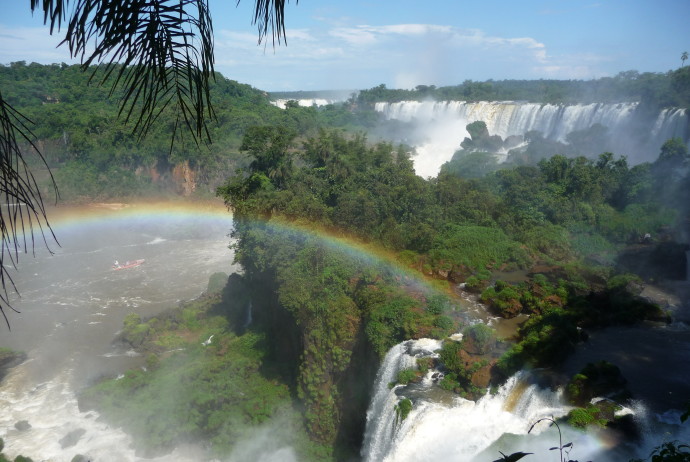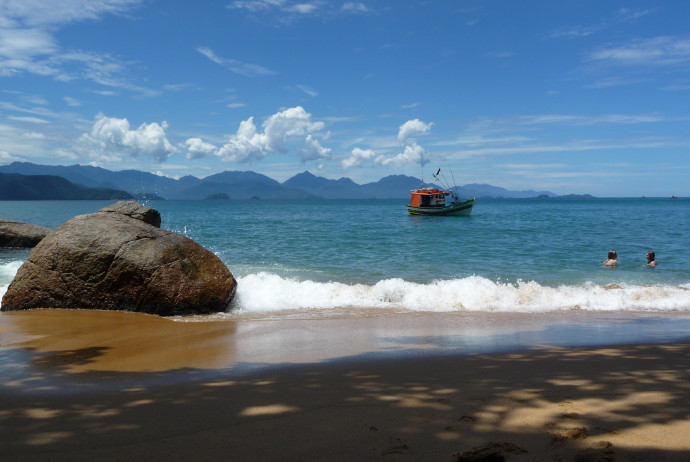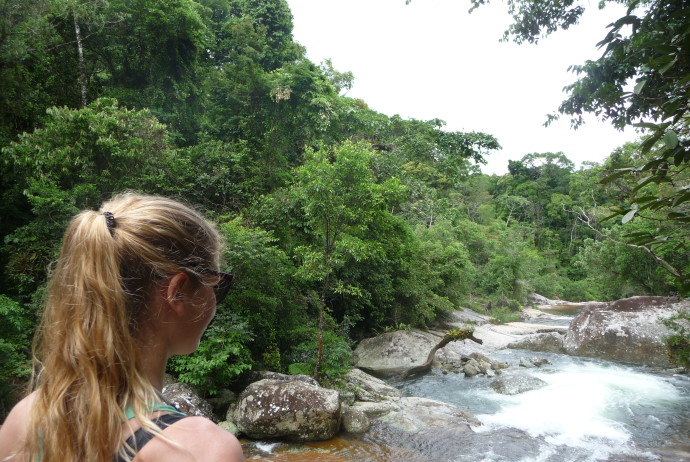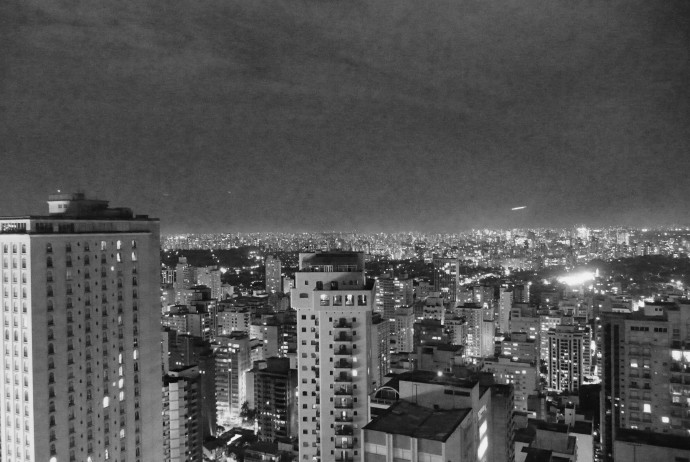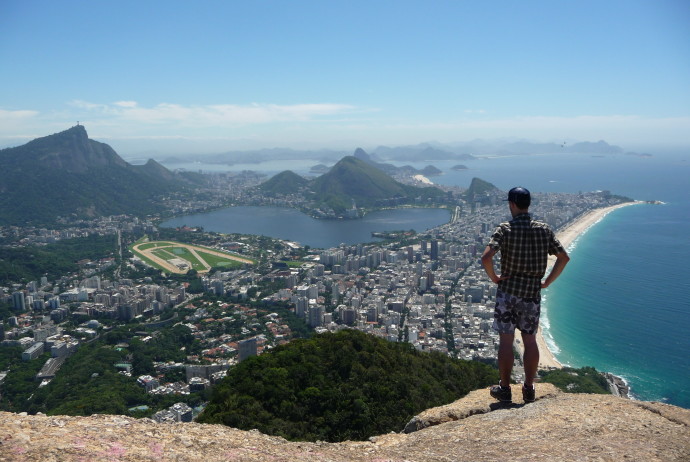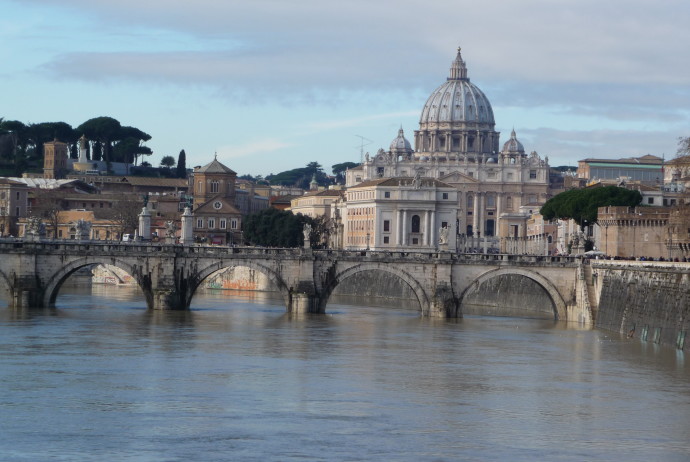When boarding our plane to Foz do Iguaçu last Sunday we found ourselves joined again by fellow backpackers which all were excited like us to see one of the new seven wonders of Nature: the mighty Iguaçu Falls.
We had enough time here to see the falls from both, the Brazilian and the Argentinian side, to eat some of the best meats we ever tasted and to explore some of the other sights in and around the city.
The first day we spent chilling at the hostel’s pool area and exploring the town a bit on the search for an open restaurant to have dinner at. This turned out to be quite a challenge, as most restaurants are closed on Sundays.
The next morning the bus 120 delivered us directly at the entrance of Iguaçu National Park. This park on the Brazilian side gave us the big picture panoramic perspective on how vast the whole area of the falls really is. We wandered along the trails, enjoying the breathtaking views. This would have been a purely peaceful activity if it had not been for the mean little beasts called coaties, frequently attacking us from ambush to steal the cookies from our backpacks. We solved the problem by eating all the cookies ourselves and were thus able to continue blissfully along the park’s path.
Supposedly, waterfalls make people happy by producing negative ions. We don’t know whether those ions, the sheer amount of cookies we ate or simply the sight of this glorious natural wonder were the reason for our enthusiastic jollity, but in the end, who cares.
Pushing the edges of an already perfect day to make it even more amazing, we had dinner at the churrascaria Bufalo Branco, where we spent hours joyfully giggling while enjoying the best meats we had ever tasted in our entire lives (seriously, no exaggeration here!).
The next day our exploration continued on the Argentinian side. As recommended by our hostel’s staff, we booked a guided tour in order to ease the boarder crossing formalities. However, we had not considered that this would also encompass having to run after our guide Juan, holding up a yellow flower-patched umbrella. As this crossed seriously with our idea of a good day, our paths quickly separated from the group to explore the park at our own pace and preferences. We discovered the falls from various different but all impressively beautiful close-up perspectives: we went on a speed boat ride which took us near enough to the falls to get a thorough shower, a welcome cool-down; we hiked different trails in the park and looked down into the devils throat, the “garganta del diablo”.
The following day we went to see “Parque das Aves”, the bird park of Foz do Iguaçu, to see some toucans, flamingos, parrots and other feathery creatures. We used the rest of the day to stroll through town and expanding our list of “must-try” Brazilian typical snacks, the much loved “Salgados” and “Dulces”. Due to our exhaustion caused by the heat and all the rather sugar and grease loaded foods, we had to stop at every happy hour offering bar along the way back to our hostel. This helped to recharge our energy enough to make it back “home” eventually.
On our last day we reloaded our backpacks, stocked up on bananas, chocolate, cookies and water and boarded our bus to Buenos Aires. Argentina here we come!
When in Foz do Iguaçu
Where to sleep: Concept Design Hostel – a great backpacker choice with a nice add on: a free Caipi every night OR Viale Tower – a bit more luxurious: here you can enjoy your drinks in the pool on the 13th floor with a view over the whole town
Where to eat & drink: Bufalo Branco – no question, the best meats ever
What to see: The main sight really are the falls, but make sure to see them from both sides.
Here are some highlights captured during our stay in Foz do Iguaçu:
